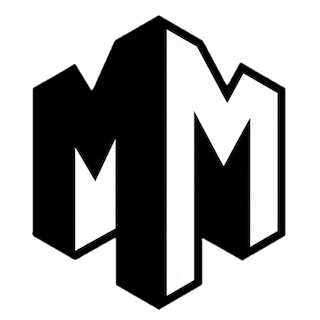ENGR 122 · January – May 2025
Autonomous Racing Boat
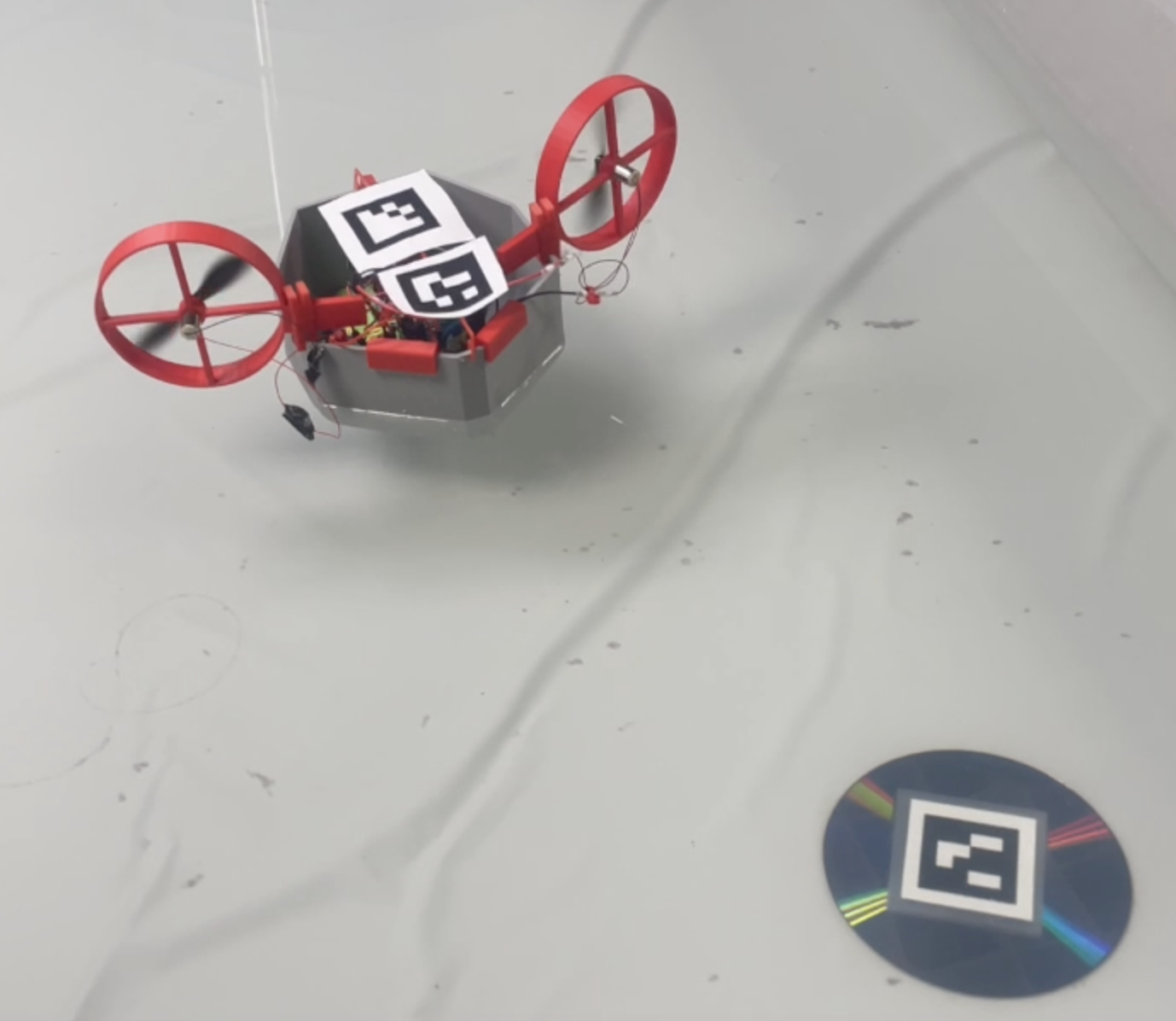
Project Overview
The Autonomous Racing Boat was developed as part of the ENGR 122 design course at Stevens Institute of Technology. The objective was to design and fabricate a 3D-printed, fully autonomous racing boat capable of completing three laps around a smart pool in under five minutes. The project combined mechanical design, embedded systems, and autonomous programming to produce a functional proof-of-concept vehicle.
Client & Challenge
The client, Stevens ENGR 122 Design Lab, required teams to use a standardized electronics kit to build an autonomous watercraft that could navigate independently using onboard sensors and ArUco marker tracking. The challenge was to achieve stable buoyancy, water-resistant electronics integration, and precise navigation within tight design and time constraints.
Design Process
The development process followed an iterative design and testing approach. Multiple hull geometries were evaluated using SolidWorks simulations to assess stability, center of mass, and buoyancy. Prototyping involved both scaled-down and full-size prints to validate flotation and electronic fit.
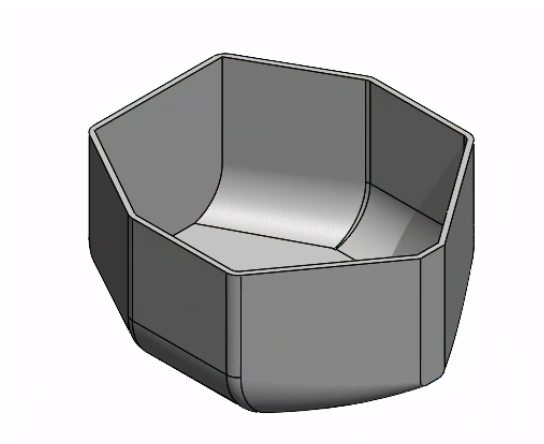
SolidWorks rendering of the Tortuga hull design.
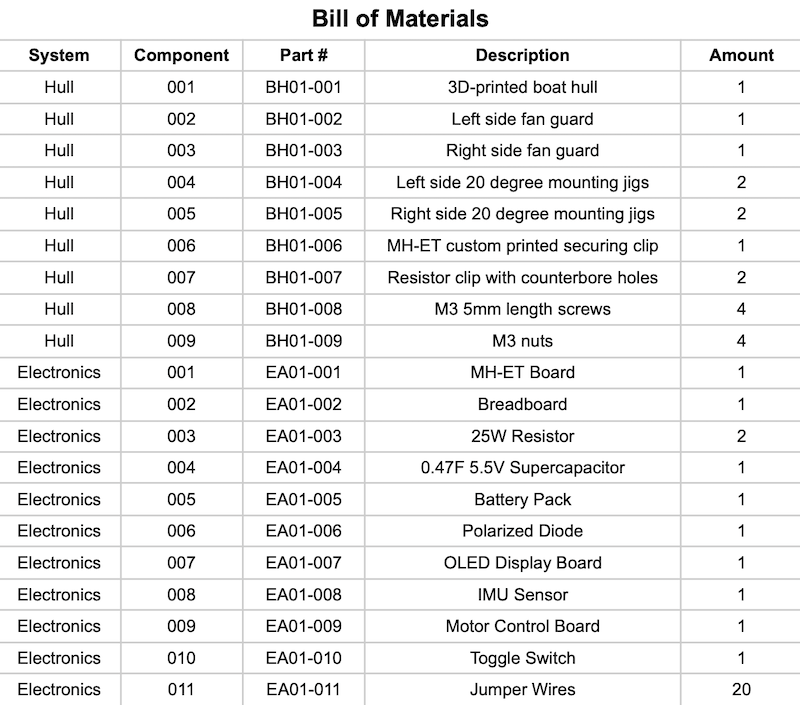
Bill of materials for the final boat design.
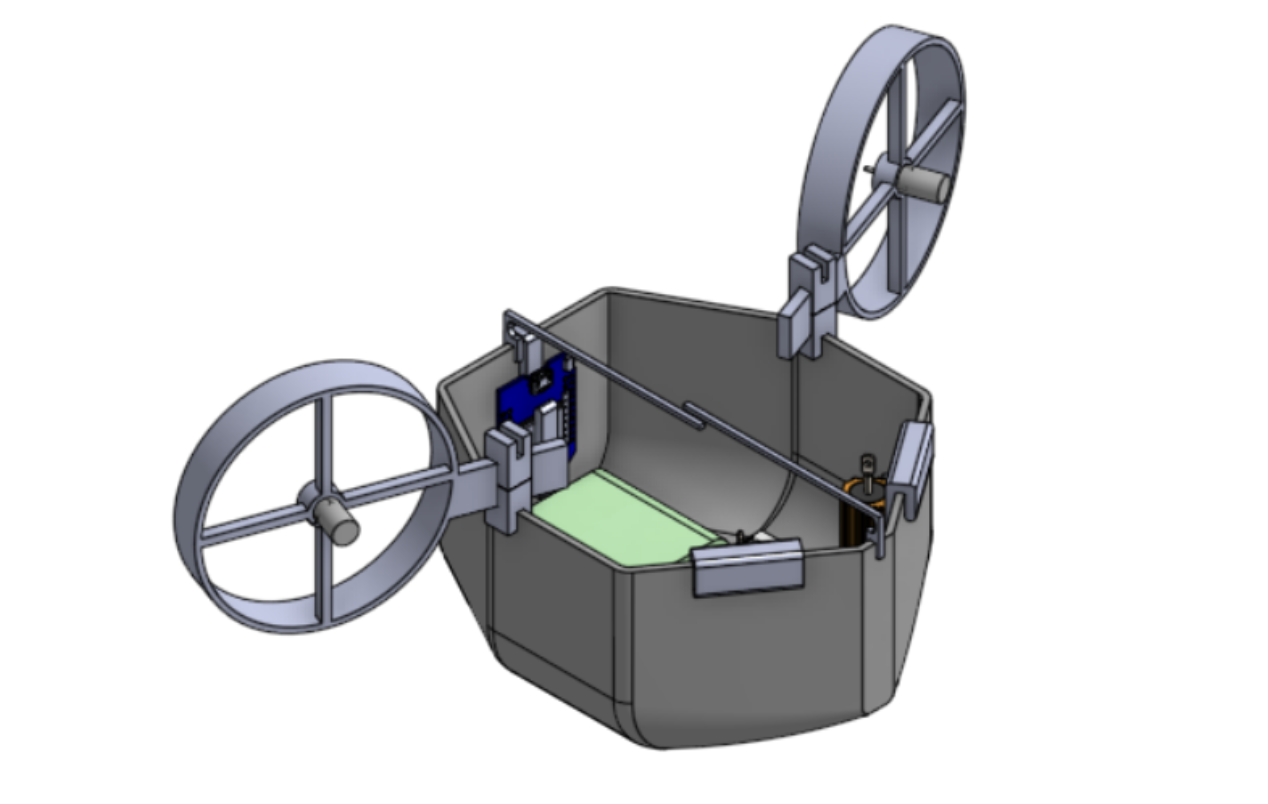
SolidWorks rendering of the complete boat assembly.
- Hull Design: Wide, turtle-shell-like base to improve stability and displacement.
- Fan Propulsion: Dual-motor configuration using angled fans for turning control.
- Component Mounts: Modular 3D-printed clips for easy installation and maintenance.
- Electronics Integration: MH-ET board with IMU, OLED display, and motor controller on a breadboard for modular wiring.
System Architecture
The autonomous system used an ESP32-based MH-ET controller communicating with Stevens’ MQTT server to process ArUco marker data. The control algorithm used positional feedback to navigate between set waypoints, completing a loop around the pool.
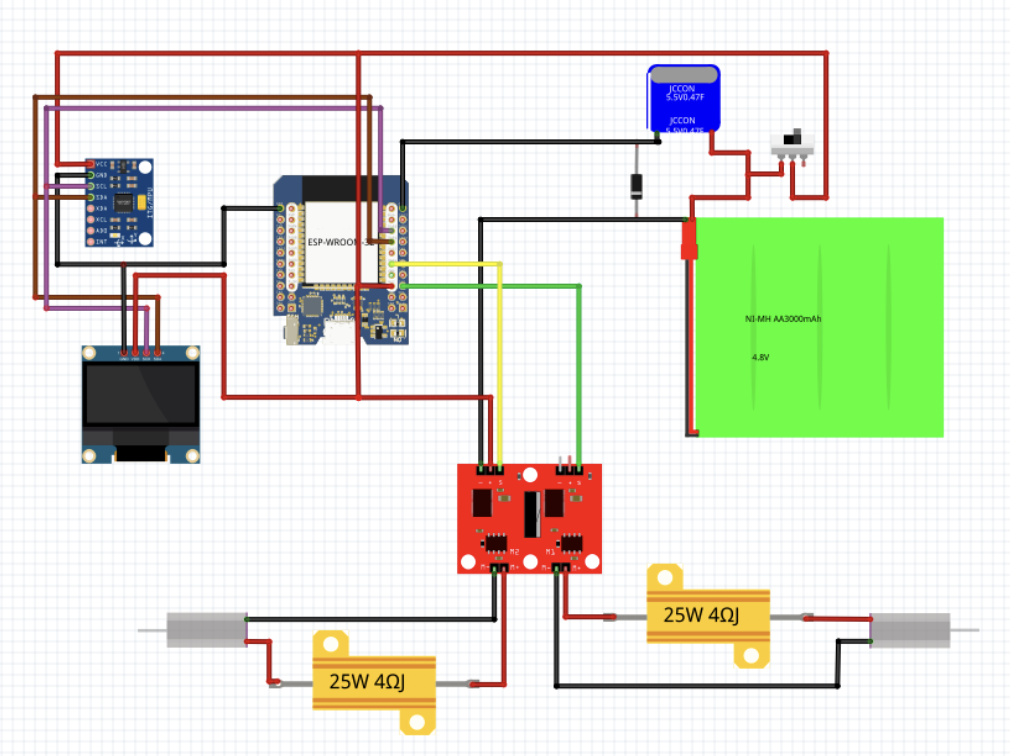
Circuit diagram depicting arrangements of sensors and actuators.
- Inputs: ArUco marker positions, IMU orientation, user-defined waypoints.
- Processing: Position calculation, PID-based direction control, MQTT communication.
- Outputs: Dual fan actuation for navigation, OLED display feedback.
Programming & Control
The control logic implemented real-time position feedback and adaptive motor actuation. The navigation algorithm processed ArUco marker data to calculate distance and orientation relative to targets, adjusting fan speeds accordingly.
- Read live position and orientation from MQTT feed.
- Calculate target direction and distance using trigonometric relations.
- Adjust fan speeds to align with the next waypoint.
- Advance through four preset corner targets to complete a lap.
Results
The final prototype achieved 2.5 laps in 5 minutes, falling just short of the 3-lap benchmark. However, it demonstrated strong reliability and autonomous control, with accurate waypoint tracking and consistent fan actuation. The boat successfully floated, maintained stable navigation, and transmitted live data to the cloud.
- Freeboard Height: ~2 inches with full electronics installed.
- Weight Capacity: 230g payload including battery pack.
- Lap Completion: 2.5 laps / 5 minutes.
- System Reliability: Stable operation across multiple test sessions.
Future Improvements
- Add a keel to improve directional stability.
- Further enhance electronic compartmentalization for water protection.
- Redesign fan guards for better structural support.
- Integrate solar power and advanced path-planning algorithms for indepndent navigation outdoors.
Conclusion
This project demonstrated how mechanical, electrical, and software systems can integrate to achieve autonomous functionality in a constrained environment. Despite not fully meeting the lap-time benchmark, the Autonomous Racing Boat served as a successful proof-of-concept that can be refined for future competitions or research in autonomous surface vehicles.
Team
- Mahdy Muratov: Primary Programmer, Mechanical Design, Report Editor
- Alessandro Chavez: Mechanical Design, Electronical Assembly, Programming Troubleshooter
- Zora Swindell: Electrical Assembly, Report Editor
- Dylan Ohnsorg: Systems Integration, Presentation, Report Editor
